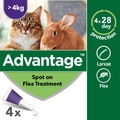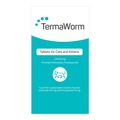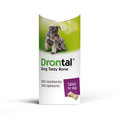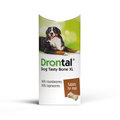
Choosing a dog is incredibly exciting - but there's much more to it than finding the cutest pooch of the litter. In the first part of our guide to how to choose a dog, we looked at some of the major factors that should influence your choice, including the characteristics of different breeds, whether to go for an adult or a puppy, and how much exercise you can provide.
In this instalment, we'll take you through some the other key things you need to keep in mind, including offering a few handy tips on spotting a healthy dog.
Will they be around children?
While most well-trained dogs can enjoy a good relationship with children, some seem to have almost a natural affinity with them. So, if your pet is likely to be around kids a lot, it's definitely worth considering a breed that's known to get on well with little people.
There are plenty to choose from, including West Highland White Terriers, which make excellent playmates for children, and Labrador Retrievers.
Remember to consider all the other factors that should influence your choice, such as how much exercise is needed, when hunting for child-friendly breeds.
How much fur will they shed?
A small consideration but a potentially important one nonetheless - if you are concerned about how much fur your pet might shed, consider getting a non-shedding breed. This doesn't mean your home will always be fur-free (unlikely when you own a dog!) but it should present much less of a problem in terms of cleaning.
Breeds that are either non-shedding or less likely to shed include the Bichon Frise, the Spanish Water Dog, the Yorkshire Terrier and the Lhasa Apso.
Get to know their history - and each other
Before deciding which pooch to take home, it's important to spend some time getting to know them, both in terms of their history and how well you get along.
When it comes to history, exactly how much you can find out will depend on a number of factors, including whether you plan on getting a puppy or an adult, if you want a pedigree or a crossbreed, and if you are rescuing a dog or adopting one from a private home. However, your goal always remains the same - to find out as much about their past as possible.
This includes their parentage, which can help tell you about the dog's temperament (particularly useful if you are interested in a crossbreed, as it is trickier to predict their characteristics) and any potential hereditary health problems, and their veterinary history. Vaccination history and certificates and, if you are taking on an adult, any past health issues or injuries, are all important things to look out for.
If you are interested in giving a rescue dog a forever home, you should talk to the rescue centre about the pooch's past home life, as this can help reveal any possible behavioural issues or problems with taking him home, such as issues with children or separation anxiety. Plus, this may also give you a picture of the dog's likes and dislikes, which again provide clues for how well suited the two of you are.
Once you have a good idea of your potential new pet's history, spend a little time together by going for a walk or playing a few games (if you are interested in a puppy, you will need to content yourself with a cuddle or a few games indoors). When out and about and actively engaged with you, the dog should show off a bit more of his unique personality. This will be one of the best indicators of how well the two of you will get on.
How to spot a healthy dog
Frequent visits to the vet can be extremely expensive, not to mention emotionally difficult for you as an owner. When considering which dog to bring home, taking its health into account is important. While you might not always be able to get an idea of potential hereditary conditions, such as if you are adopting a rescue dog, there are plenty of outwards signs of good general health to look out for.
Try to look at the dog's features individually, as well as the pooch as a whole. Its coat, for example, should be clean and shiny, while its eyes ought to be bright and clear. Check the ears for discharge or redness (both of which indicate ear problems), and make sure its gums are pink and teeth are clean. The nose should be discharge-free.
Written by: Hannah








